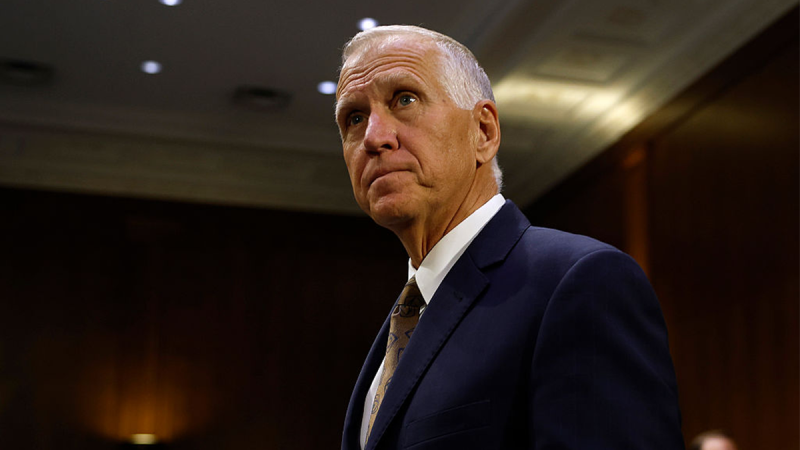
Nearly all the universal injunctions blocking President Donald Trump’s agenda were issued by just five of the nation’s 94 federal district courts, a statistic that the administration said lays bare the Left’s strategy of lawfare.
Trump and Attorney General Pam Bondi spoke at a news conference Friday just after the U.S. Supreme Court ruled in a 6-3 decision that district judges, the lowest-level jurists in the federal system, cannot impose nationwide injunctions. Bondi noted that out of 40 nationwide injunctions issued since Trump retook the White House, 35 came out of five districts perceived as liberal.
‘Active liberal… judges have used these injunctions to block virtually all of President Trump’s policies,’ Bondi said. ‘No longer. No longer.’
Nationwide injunctions are court orders that prevent the federal government from implementing a policy or law. They have a cascading effect impacting the entire country, not just the parties involved in the court case, and have been used against the Trump administration at a vastly higher rate than previous administrations.
Trump’s first administration faced 64 injunctions out of the total 127 nationwide injunctions issued since 1963, Fox News Digital previously reported. There were 32 injunctions issued against the Bush, Obama and Biden administrations collectively since 2001, meaning the first Trump administration was on the receiving end of double the amount of nationwide injunctions than his two predecessors and successor combined, according to an April 2024 edition of the Harvard Law Review.
Bondi pointed to the five district courts – Maryland, Washington, D.C., Massachusetts, California and Washington state – calling it ‘crazy’ that such an overwhelming number of nationwide injunctions originated in those jurisdictions. Conservatives have accused the Left of bringing their cases in liberal judicial districts stocked with Democratic-appointed judges.
Fox News Digital looked at the five district courts and how judges in them have issued sweeping injunctions that have hampered Trump’s federal policies.
U.S. District Court for the District of Maryland
The Supreme Court agreed this year to take up three consolidated cases involving nationwide injunctions handed down by federal district judges in Maryland, Massachusetts and Washington state related to Trump’s birthright citizenship executive order.
The U.S. District Court for Maryland was one of the courts nationwide that issued an injunction against Trump’s January executive order to end the practice of granting birthright citizenship to the children of illegal immigrants. Maryland U.S. District Judge Deborah Boardman issued the injunction in February following a lawsuit brought by five pregnant illegal immigrant women in the state, which was followed by other district judges in Washington state and Massachusetts ordering injunctions of their own.
The Maryland district court also issued a separate preliminary injunction against the Trump administration’s executive orders ending federal support for diversity, equity and inclusion (DEI) programs in February.
The court recently came under fire from the Trump administration when the Department of Justice filed lawsuits against each of the 15 federal judges on the Maryland federal bench earlier this month for automatically issuing injunctions for certain immigration cases. The injunctions have prevented the Department of Homeland Security from deporting or changing the legal status of the immigrant in question for two business days.
‘President Trump’s executive authority has been undermined since the first hours of his presidency by an endless barrage of injunctions designed to halt his agenda,’ Bondi said in a press release of the state’s automatic injunction practices. ‘The American people elected President Trump to carry out his policy agenda: this pattern of judicial overreach undermines the democratic process and cannot be allowed to stand.’
U.S. District Court for the Northern District of California
Judges on the bench for the Northern District of California have issued at least six significant injunctions hampering policies put forth by the Trump administration this year. The Northern California district court includes counties such as San Francisco, Sonoma and Santa Clara.
Back in March, Judge William Alsup, for example, granted a preliminary injunction ordering federal agencies to reinstate probationary employees fired under the Trump administration’s efforts to slim down the size of the federal government. Judge Susan Illston granted a temporary pause in May to the Trump administration’s federal reductions in force initiatives, and Judge William Orrick granted a separate injunction in April that prevented the Trump administration from withholding federal funds from areas deemed sanctuaries for illegal immigrants.
Federal judges on the Northern California bench also issued injunctions to block the enforcement of Trump administration polices related to organizations that promote DEI and LGBTQ programs and to prevent the administration from terminating the legal visa status of international students.
U.S. District Court for the District of Columbia
The U.S. District Court for the District of Columbia has issued at least six signigicant injunctions against the Trump administration this year, including Judge James Boasberg’s March injunction preventing the Trump administration from deporting violent illegal immigrant gang members under the Alien Enemies Act – which received widespread backlash among conservatives.
‘People are shocked by what is going on with the Court System. I was elected for many reasons, but a principal one was LAW AND ORDER, a big part of which is QUICKLY removing a vast Criminal Network of individuals, who came into our Country through the Crooked Joe Biden Open Borders Policy! These are dangerous and violent people, who kill, maim and, in many other ways, harm the people of our Country,’ Trump posted to Truth Social in March following Boasberg extending his restraining order against the use of the Alien Enemies Act to deport illegal immigrants with alleged ties to gangs, such as Venezuelan criminal organization Tren de Aragua (TdA).
Federal Judge Loren AliKhan issued a preliminary injunction in January barring the Trump administration’s freeze on federal grant disbursements through various federal agencies; Judge Paul Friedman blocked the Trump administration from targeting foreign service workers’ collective bargaining rights in May; and Judge Ana Reyes granted a nationwide injunction in March barring the Pentagon from enforcing Trump’s executive order banning transgender individuals from serving in the U.S. military.
Judges on the court have also issued injunctions targeting the Trump administration’s plans to dismantle the federally-funded state media network Voice of America, and another that blocked the Bureau of Prisons from implementing a Trump executive order restricting transgender healthcare and accommodations for federal inmates.
U.S. District Court for the District of Massachusetts
The U.S. District Court for the District of Massachusetts has issued at least four significant injunctions against the Trump administration this year, including the nationwide preliminary injunction barring Trump’s executive order ending the practice of granting birthright citizenship to the children of illegal immigrants.
Other injunctions issued this year include Judge Julia Kobick this month blocked Trump’s presidential action requiring passports to reflect a person’s biological sex and not their gender identity, and another that involved the Trump administration’s efforts to end a Biden-era parole program for hundreds of thousands of migrants from Afghanistan, Latin America and Ukraine.
U.S. District Court for the Western District of Washington
Ahead of the Supreme Court’s ruling limiting the scope of nationwide injunctions, judges on the District Court for the Western District of Washington issued a handful of injunctions targeting Trump policies, including joining courts in Maryland and Massachusetts earlier this year blocking Trump’s executive order ending birthright citizenship for children of illegal immigrants.
Judge Jamal Whitehead issued a preliminary injunction in February halting Trump’s January executive order suspending the U.S. Refugee Assistance Program. While another federal judge on the bench in March granted a nationwide preliminary injunction blocking Trump’s executive order barring transgender individuals from serving in the military.
The U.S. District Court for the Western District of Washington includes counties such as King – home to Seattle – Snohomish and Clark. The two courts for the Western District of Washington and the Northern District of California are both in the 9th Circuit.
Trump celebrated the Supreme Court’s ruling restricting the scope of federal judges’ powers to grant nationwide injunctions as ‘a monumental victory for the Constitution.’
‘The Supreme Court has delivered a monumental victory for the Constitution, the separation of powers, and the rule of law in striking down the excessive use of nationwide injunctions… I was elected on a historic mandate, but in recent months, we’ve seen a handful of radical left judges effectively try to overrule the rightful powers of the president to stop the American people from getting the policies that they voted for in record numbers. It was a grave threat to democracy,’ Trump said on Friday.
SCOTUS’ ruling followed the Trump administration filing an emergency appeal with the highest court in March, when the then-acting solicitor general, Sarah Harris, sounded the alarm that nationwide injunctions had hit ‘epidemic proportions’ under the second Trump administration. She noted that the federal government faced 14 universal injunctions in the first three years of the Biden administration, compared to 15 leveled against the Trump admin in one month alone.
Universal injunctions were also a sticking point for officials in the first Trump administration, who railed against the flow of injunctions ordered against the 45th president’s policies and laws, including the former chiefs of the Department of Justice.
‘Courts issued an average of only 1.5 nationwide injunctions per year against the Reagan, Clinton and George W. Bush administrations, and 2.5 per year against the Obama administration,’ former Assistant Attorney General Beth Williams said in February 2019.
‘In President Trump’s first year in office, however, judges issued a whopping 20 nationwide injunctions – an eight-fold increase. This matches the entire eight-year total of such injunctions issued against President Obama during his two terms. We are now at 30, matching the total number of injunctions issued against the first 42 presidents combined.’
Fox News Digital’s Andrew Mark Miller, Breanne Deppisch and Ashley Oliver contributed to this report.




















